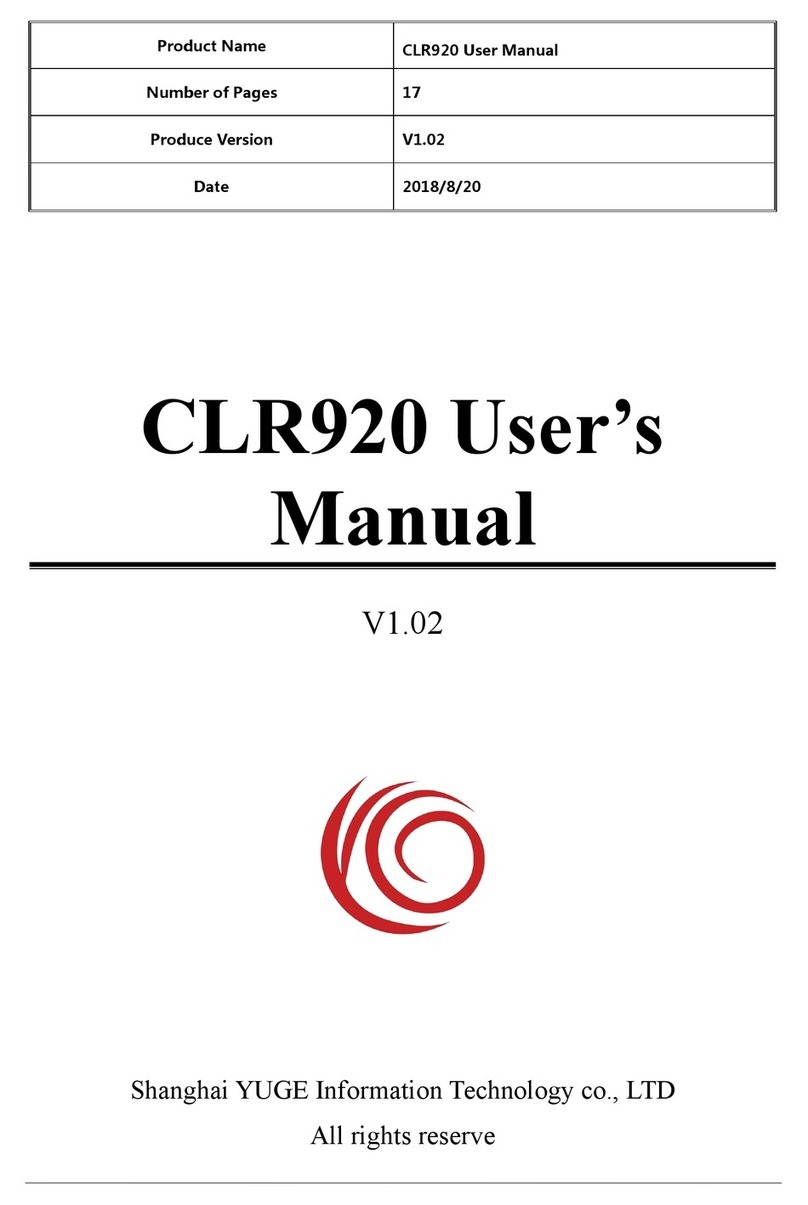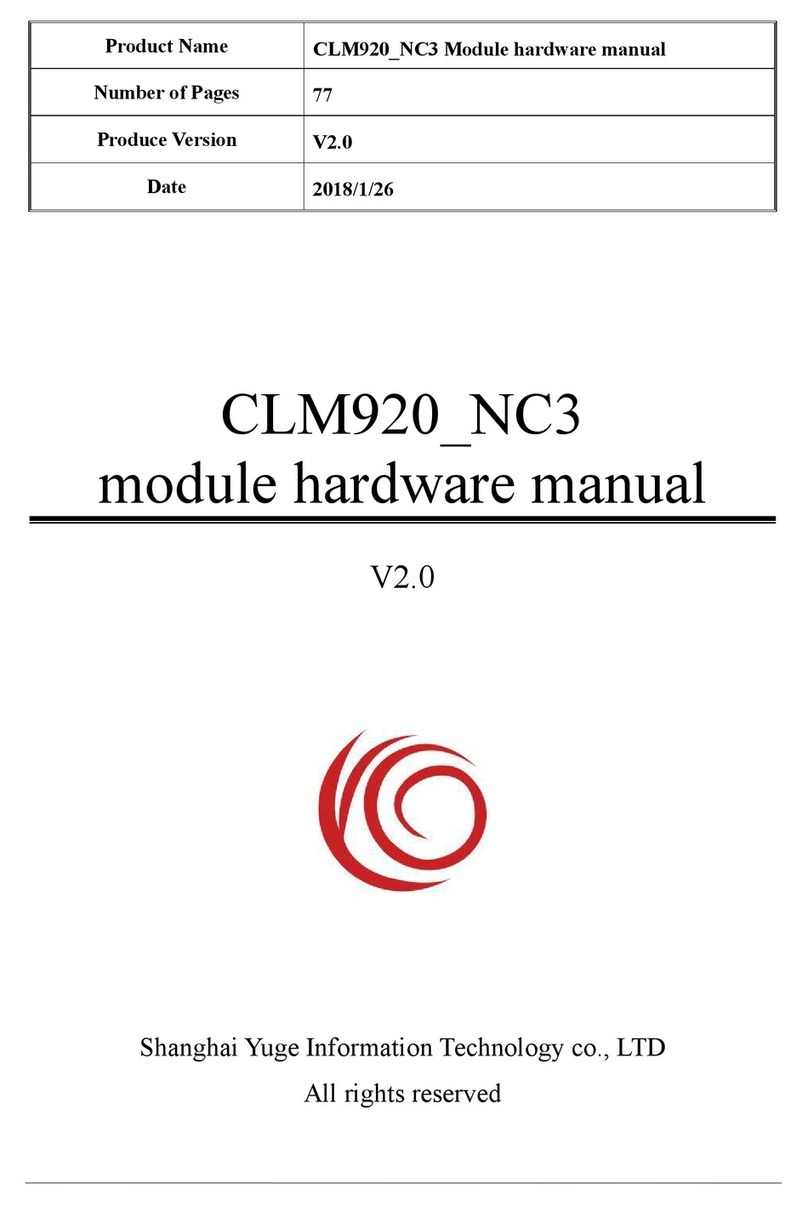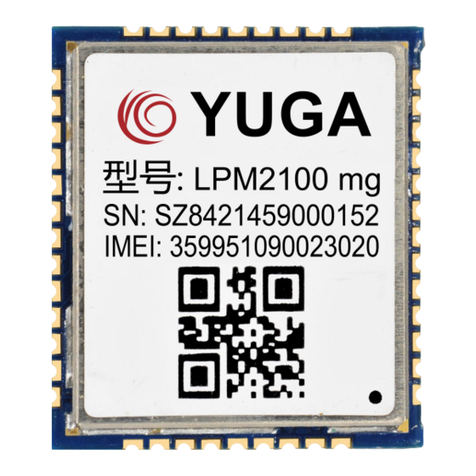
CEM600 EVDO Mini PCIE Module Hardware User Guide
Shang Hai YUGE Information Technology co., LTD
Chart catalog
Figure 2-1 Functional Block Diagram of the CEM600 Module.................................................5
Figure 5-1 UART interface and microprocessor connection reference design......................... 12
Figure 5-2 Serial connection reference design..........................................................................13
Figure 5-3 USB interface signal................................................................................................13
Figure 5-4 USB interface reference design...............................................................................14
Figure 5-5 PCM digital voice application reference design......................................................15
Figure 5-6 Differential Audio Interface Reference Design.......................................................16
Figure 5-8 RUIM card interface reference design.................................................................... 17
Figure 5-9 LED lamp reference design.....................................................................................18
Figure 5-10 Antenna interface ESD protection recommended................................................. 20
Figure 6-1 Outline drawing of the CEM600 module................................................................21
Figure 6-2 CEM600 module structure size............................................................................... 22
Figure 6-3 PCI Express Mini Card Connector..........................................................................23
Figure 6-4 Antenna connector size............................................................................................23
Figure 6-5 Antenna connector mating plug...............................................................................24
Table directory
Table 3-1 Overall technical indicators........................................................................................ 7
Table 3-2 Radio Frequency Receive........................................................................................... 7
Table 3-3 RF emissions...............................................................................................................8
Table 3-4 DC characteristics of the power supply...................................................................... 9
Table 4-1 Interface definition....................................................................................................10
Table 5-1 UART Interface Definition....................................................................................... 12
Table 5-2 USB Interface Definition.......................................................................................... 13
Table 5-3 PCM Interface Definition......................................................................................... 14
Table 5-4 AUDIO Interface Definition..................................................................................... 15
Table 5-5 RUIM card interface definition.................................................................................16
Table 5-7 LED_WWAN_N Status Indicator Table................................................................... 18
Table 5-8 Power Interface Definition........................................................................................18
Table 5-9 Antenna interface characteristics.............................................................................. 19


































